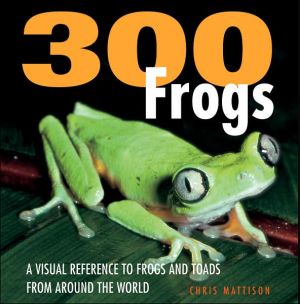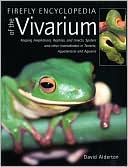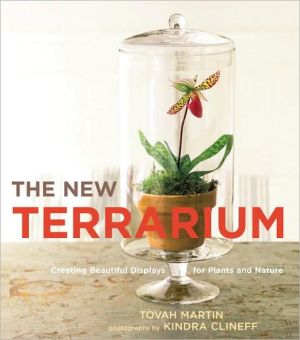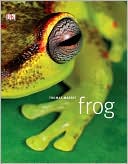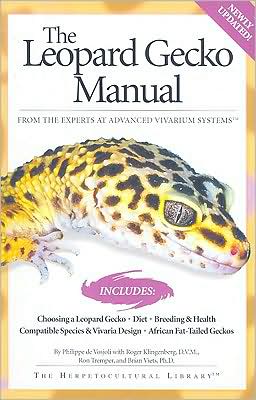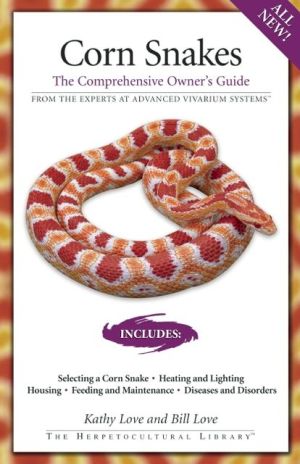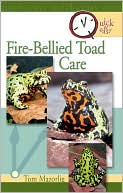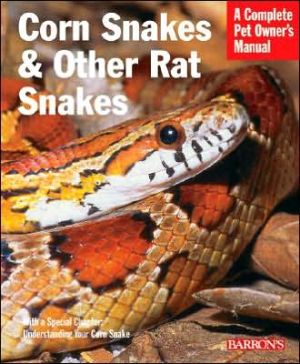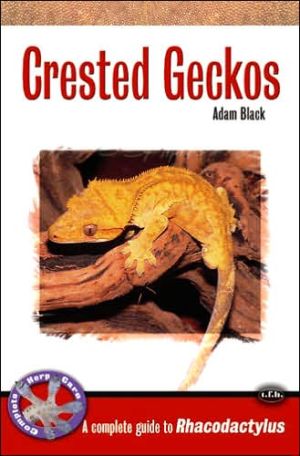300 Frogs: A Visual Reference to Frogs and Toads from Around the World
300 of the most abundant and familiar amphibians in nature.\ From the Introduction: "A few acres of tropical forest in South America may contain as many as 60 species -- roughly the same number as in the whole of the United States."\ This compact reference is a comprehensive visual resource with vibrant color photographs, expert text and detailed species profiles that describe the characteristics, habits, breeding, diet, habitat, distribution and conservation status of 300 of the world's...
Search in google:
A compact visual reference to the habitat, distribution and conservation status of 300 of the world's frogs that combines color photographs, expert text and detailed species profiles -- a straightforward introduction for naturalists and enthusiasts.
Excerpted from the Introduction \ Frogs and toads are the most abundant and familiar amphibians. They make themselves known to us by croaking or calling, especially in the breeding season. Many have names that describe their voices, such as Bullfrog, Pig Frog, Barking Frog, Spring Peeper, and Blacksmith Frog.\ Many species have big bulging eyes and a wide grin, making them appear "friendly," and few people dislike them in the same way that they dislike lizards and snakes, for example. Toads sometimes receive a bad press, however, mainly because of the sinister connotations they acquired during the Middle Ages, when they were associated with witchcraft.\ Frogs or Toads? \ Strictly speaking, there is no real difference between frogs and toads; all of them are known to scientists as anurans. In plain English, however, we usually reserve the term toad for dry, warty species that run or walk. Many of them belong to the family Bufonidae, but toads are also found in other families. Frogs have smooth damp skins, live near water, and they leap. There are exceptions to this rule, though, and some families contain species that are variously called frogs or toads. It is less confusing to think of all the tailless amphibians as frogs and use the word toad for members of certain families such as the Bufonidae.\ Frog Diversity \ At the latest count there were more than 5,400 species of frogs and toads (order Anura). They account for some 90 percent of amphibians (class Amphibia)-- the other groups being about 550 species of newts and salamanders (order Caudata) and 173 species of caecilians (order Gymnophiona).\ Frogs andtoads are traditionally divided into 29 families, although recent research has indicated that this number is probably too low. Here we have taken a conservative view, while acknowledging that major changes to frog classification are likely to occur over the next few years (see pages 18 to 19). In 300 Frogs representatives of most families are included.\ Some families contain just one species; others have several hundred. Whereas some families are found around the world, others are restricted to very small regions. The Mexican Burrowing Frog (Rhinophrynus dorsalis), for example, is in a family of its own and lives only along the coastal plain that links southern Texas with adjacent parts of northeast Mexico. Several other families contain only two to 10 species -- relics of families that were probably more widespread in former times but are now reduced to small populations as other, more efficient species evolved to replace them.\ One of the most successful families is the Bufonidae, with more than 400 species. Its members occur on every continent except Antarctica, although there is only one species-the Cane Toad (Bufo marinus) -- in Australia, and that has been introduced by humans. Another successful family is the tree frogs (Hylidae), with more than 800 species scattered throughout most parts of the world but absent from much of the African continent.\ Tropical regions are home to the greatest numbers of species. A few acres of tropical forest in South America may contain as many as 80 species -- roughly the same number as in the whole of the United States. Other regions with high species diversity include the island of Madagascar, where nearly every species is endemic (restricted to one small region), and West Africa where, in addition to the high numbers already recorded, new species are surely awaiting discovery.\ Tropical forests are ideal places for frogs because the conditions are warm and moist and there are plenty of hiding places and plenty of food in the form of insects and other small invertebrates. On the other hand, an abundance of frogs attracts an abundance of predators, so tropical frogs have evolved some ingenious methods of protecting themselves.\ With such a large number of species it is no surprise to find that frogs and toads are extremely diverse in shape, size, and color, as well as in lifestyle. The largest species is the Goliath Frog (Conraua goliath) from West Africa, which grows to 14.5 inches (36.8 cm) from its snout to the end of its back and can weigh as much as 8 lb (3.66 kg).\ There are several contenders for the title of smallest species, but it is often considered to be the Cuban Leaf-litter Frog (Sminthillus limbatus), which grows to about 0.4 inches (1 cm) in length. There are several other very small species including the rain frogs (Eleutherodactylus species). Newly hatched Gardiner's Frogs (Sooglossus gardineri) from the Seychelles are about the size of a grain of rice.\ Frogs and toads may be colorful or dull. Most are camouflaged, or cryptic, so they are difficult for predators to spot. Depending on where they live, cryptic frogs may be brown, gray, or green. Some, such as the Asian Horned Toad (Megophrys nasuta), are even shaped and colored to resemble dead leaves; as a result, they are almost invisible when resting on the forest floor.\ Others are bright shades of red, orange, yellow, or even blue. These are poisonous species whose colors warn predators that their skin contains toxic substances. The Golden Poison Dart Frog (Phyllobates terribilis) is the most poisonous animal known -- its skin contains enough poison to kill up to 1,000 humans. Frogs and toads often combine camouflage colors on their upper surface with bright warning colors on their underside -- the Oriental Fire-bellied Toad (Bombina orientalis) is a good example.
\ Booklist\ - Maren Ostergard\ A plethora of information in a small package.... The appealing, colorful layout includes large photos of brilliantly hued frogs on every spread... The highly visual layout, compact size, and simple accessibility of information will appeal both to the interested student and the casual browser. This text would be a notable addition for public libraries, as it provides an abundance of information devoted solely to frogs.\ \ \
